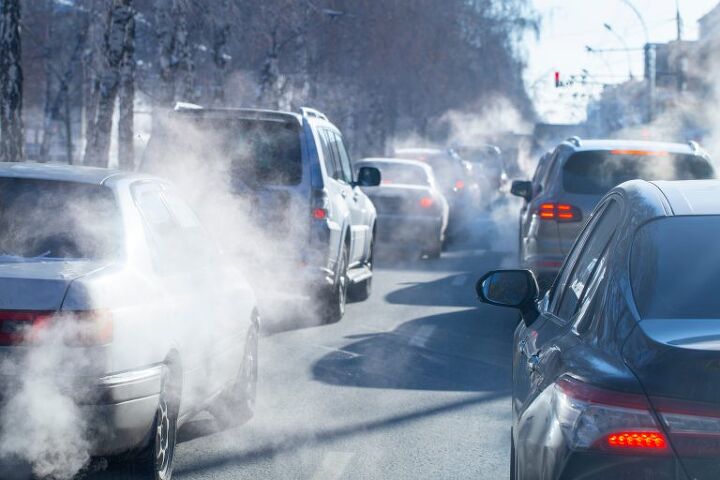California Moves to Ban Sale of New Gas Cars by 2035

California governor Gavin Newsom has signed an executive order that will ban the sale of new cars that are gasoline-powered, beginning in the year 2035.
“This is the most impactful step our state can take to fight climate change,” Newsom said in a statement. “For too many decades, we have allowed cars to pollute the air that our children and families breathe. You deserve to have a car that doesn’t give your kids asthma… Cars shouldn’t melt glaciers or raise sea levels threatening our cherished beaches and coastlines.”
He is also asking the state legislature to stop issuing new permits for fracking by 2024.
California is the largest market for cars and trucks in the U.S., accounting for 11 percent of sales. Other states often follow California’s lead on emissions regs.
All this comes right before an election in which the incumbent, Republican President Donald Trump, has tried to prevent California from making electric-vehicle sales a requirement, while challenger Joe Biden, the Democratic nominee, has said he’d pour money into the quicker adoption of EVs.
Fifteen countries, including Britain, have introduced similar measures.
Newsom wants that California Air Resources Board (CARB) to work on regulations that will make sure 100 percent of in-state new car and truck sales will be of zero-emission vehicles, which he claims will cut greenhouse-gas emissions by 35 percent.
The board is further expected to require that medium- and heavy-duty vehicle emissions will also be zero, where feasible, by 2045.
California residents would not be prevented from owning gas-powered cars under the order, nor would they be prevented from selling such vehicles on the used-car market.
Newsom has said the state needs to increase its efforts to fight greenhouse gasses and climate change in the wake of devastating wildfires, and the state, along with almost 24 others, has been suing the Trump administration, which wants to takeaway California’s ability to set its own pollution rules and to rollback nationwide emissions standards.
For our part, we’re skeptical of this order, even if the intent is good. We’re all for reducing emissions (at least I am, I can’t speak for all of us at this site), but 15 years seems an unrealistic timeline, given the small share of the market occupied by EVs. The pace of development isn’t slow, to be sure, but it might not be as fast as Newsom would like, no matter what the New York Times or Elon Musk say.
There’s also messy realities to consider. Does this mean no more sports cars or heavy-duty pickups in California, unless they’re electric? Or do cars that sell in relative small numbers get an exemption? What happens if EV adoption is slow? What happens if automakers struggle to build EVs at scale at an affordable price and/or with good real-world range? What if charging infrastructure isn’t able to scale? Hasn’t California had a difficult time providing electricity to customers in recent years – can the state keep up with demand if everyone is charging EVs all the time?
Will this create two markets for cars – California and the other 49 states? That would upset the automakers, for sure.
All of these challenges could, in theory, be addressed by then. And the market could shift on its own accord before 2035, as the Times argued.
Personally, I think this is just a way to try to get the automakers – whether legacy like GM, niche like Tesla, or startup like Lucid – to speed up EV development even more. Something all these companies are already working on, and with haste.
It may also be cynical political rhetoric from a politician who may have his sights set on higher office at a time when the effects of climate change are hitting Americans – especially Californians – particularly hard. From wildfires to hurricanes, a lot of people are dealing with natural disasters.
I said it just yesterday – EVs likely will dominate the market at some point. Maybe even by 2035. But getting there will be a bumpy road, and not nearly as neatly as an executive order would make it seem.
[Image: NadyGinzburg/Shutterstock.com]

Tim Healey grew up around the auto-parts business and has always had a love for cars — his parents joke his first word was “‘Vette”. Despite this, he wanted to pursue a career in sports writing but he ended up falling semi-accidentally into the automotive-journalism industry, first at Consumer Guide Automotive and later at Web2Carz.com. He also worked as an industry analyst at Mintel Group and freelanced for About.com, CarFax, Vehix.com, High Gear Media, Torque News, FutureCar.com, Cars.com, among others, and of course Vertical Scope sites such as AutoGuide.com, Off-Road.com, and HybridCars.com. He’s an urbanite and as such, doesn’t need a daily driver, but if he had one, it would be compact, sporty, and have a manual transmission.
More by Tim Healey
Latest Car Reviews
Read moreLatest Product Reviews
Read moreRecent Comments
- ToolGuy TG likes price reductions.
- ToolGuy I could go for a Mustang with a Subaru powertrain. (Maybe some additional ground clearance.)
- ToolGuy Does Tim Healey care about TTAC? 😉
- ToolGuy I am slashing my food budget by 1%.
- ToolGuy TG grows skeptical about his government protecting him from bad decisions.


































Comments
Join the conversation
That's why they had "Cash For Clunkers" and continuing assistance for low income people to get their cars to pass the emission test. The slaves need to get to their place of work.
California deserves to not have a treehugging crybaby for a governor